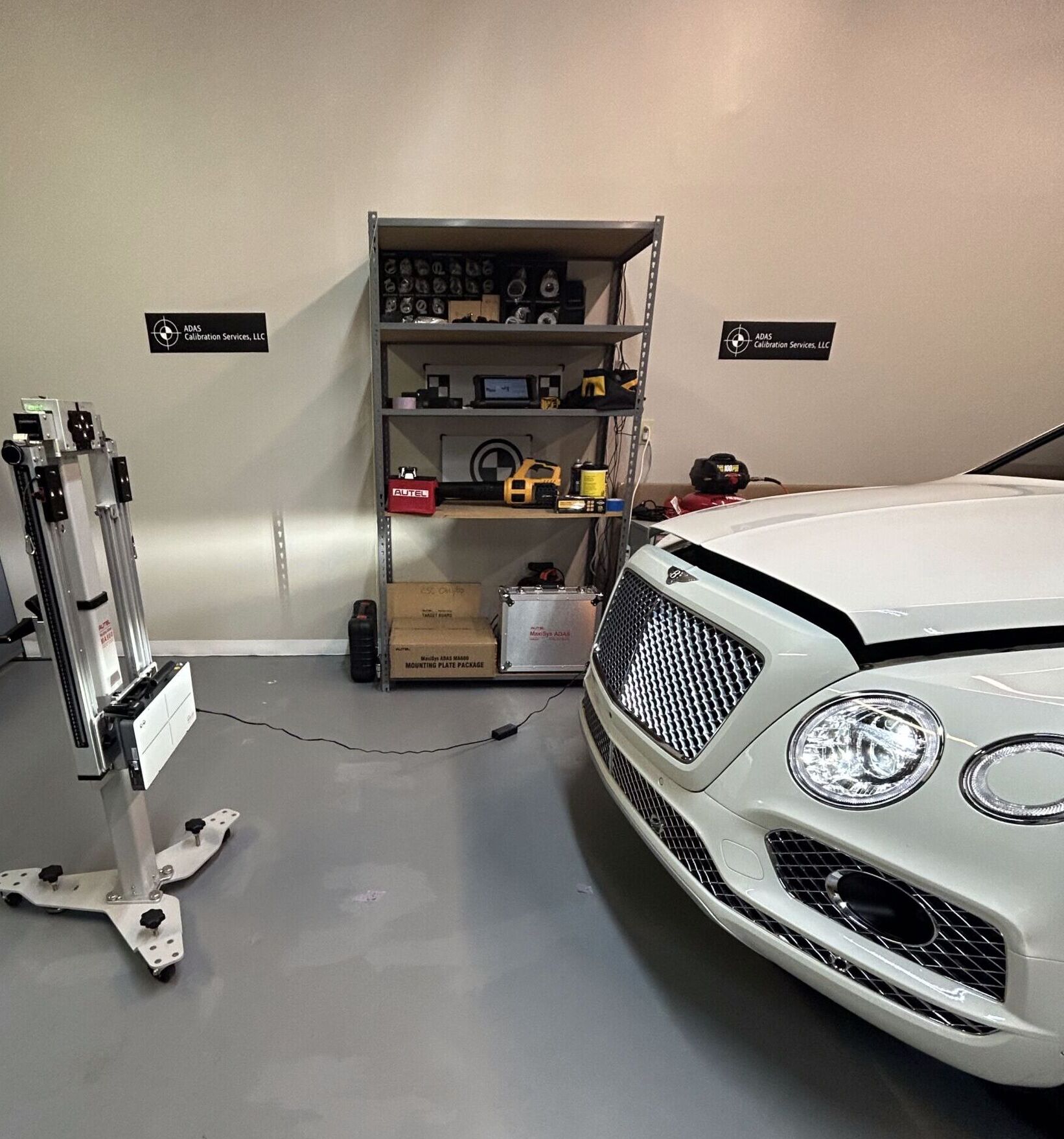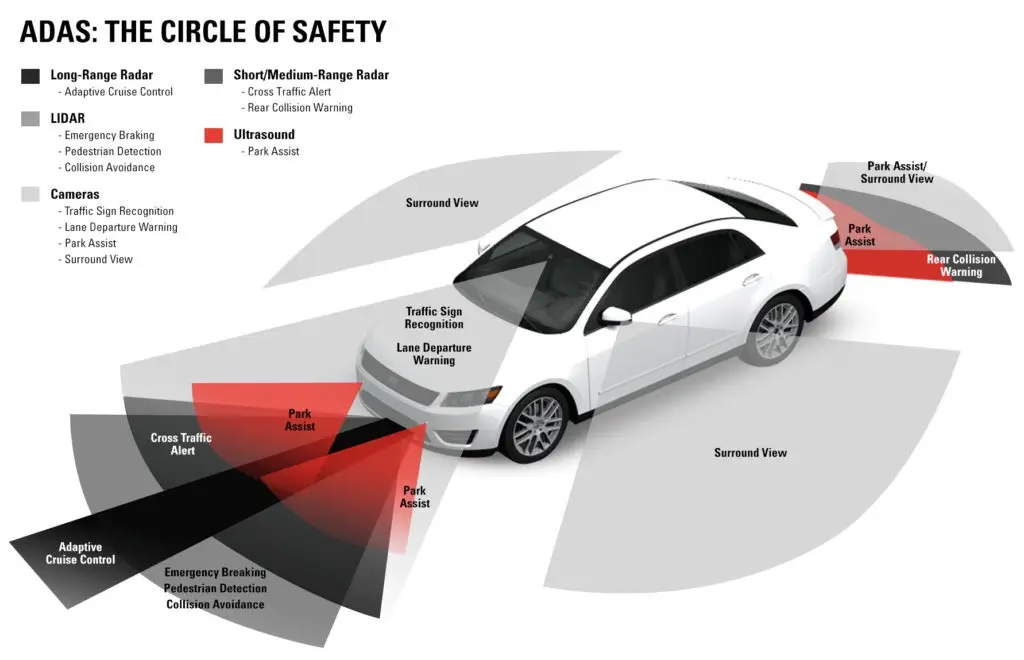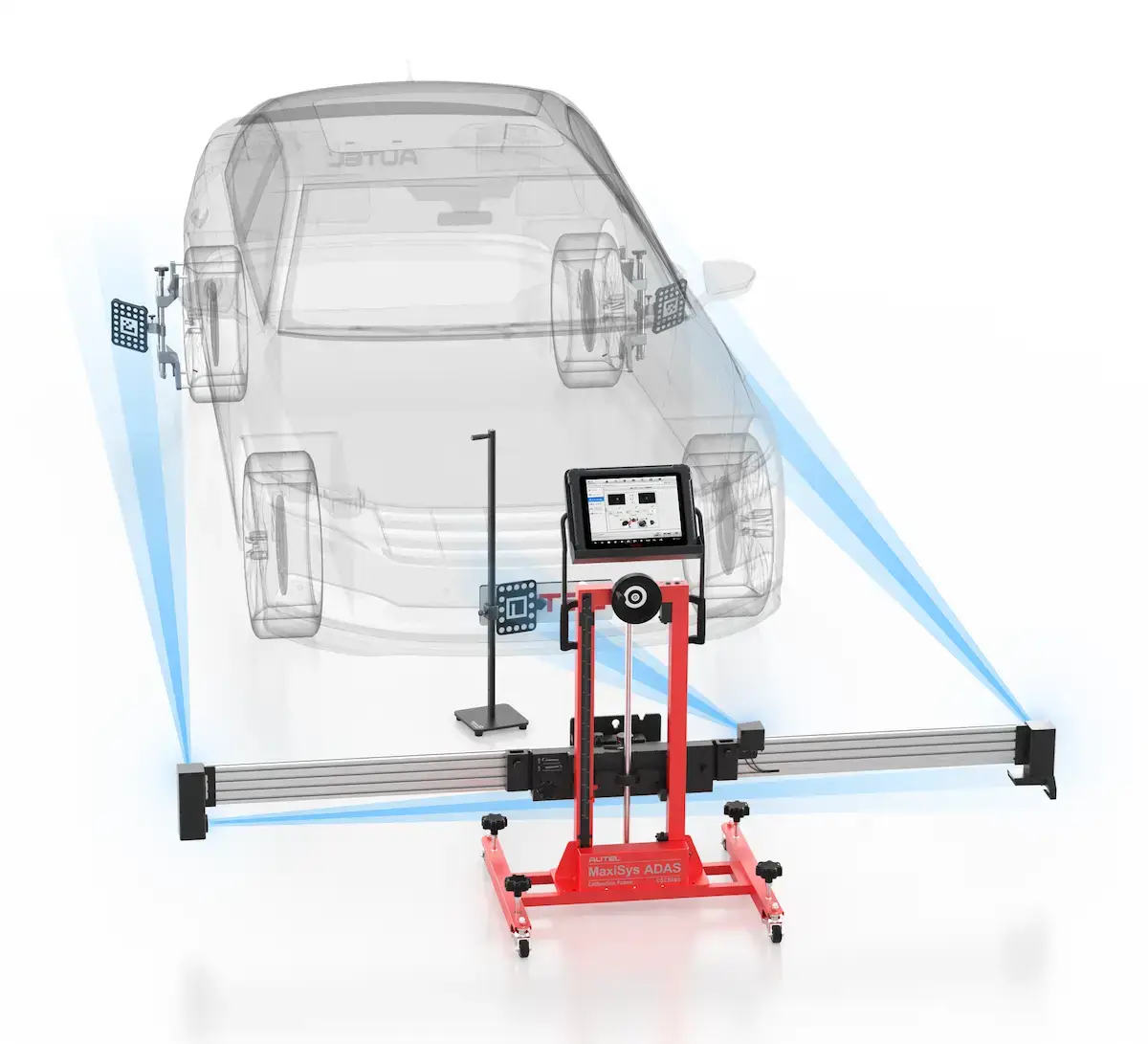ADAS Calibration Services
All Makes. All Models. All SystemsOEM Equivalent Automotive ADAS Calibration, Coding, Learning, Flashing and Module Programming Services
*Mobile and Valet Service*
I-Car Certification is the industry’s highest standard for safety, training, and repair accuracy.

Who We Are
ADAS Calibration Services, LLC is a family-owned business committed to your safety with expert automotive ADAS sensor, camera, radar, and LiDAR calibration, and module programming services. We're based just north of Indianapolis in Carmel, and now proudly serve customers at our newly opened Greenwood location as well.
Whether after a windshield replacement, bodywork, or vehicle modifications, we ensure your Advanced Driver Assistance Systems (ADAS) function flawlessly.
We use Autel equipment—the gold standard and one of the only OEM equivalent calibration tools—for fast, precise, and reliable service for individuals, body shops, service centers, and automotive professionals across Greater Indianapolis.

Why Choose Us
ADAS Calibration Services, LLC sets itself apart with a customer-first approach built on serving you. From customized invoicing to insurance assistance, to offering both mobile ADAS calibrations and in-shop services in Carmel and Greenwood, we ensure flexibility and prioritize your safety every step of the way.
Our affordable ADAS recalibration pricing model is designed to keep your vehicle’s advanced driver assistance systems functioning properly—because safety isn’t optional. That’s why we’ve calibrated our services around you, delivering precision without compromise.
When you choose us, you’re choosing a locally owned company committed to accuracy, reliability, and trust. Every recalibration is backed by our warranty, ensuring peace of mind that your ADAS systems, cameras, and radar sensors are properly aligned and calibrated to OE specifications. We approach every customer as the reason we’re in business and take that privilege as an honor.
Customer-First Approach
Commitment to Precision
Commitment to Safety

What is ADAS?
Automotive ADAS (Advanced Driver-Assistance Systems) refers to a suite of safety technologies designed to enhance vehicle safety, efficiency, and driving comfort. These systems use cameras, radar, LiDAR, and sensors to assist drivers with tasks like collision prevention, lane-keeping, adaptive cruise control, and blind-spot monitoring.
ADAS helps reduce human error, which causes most accidents, by providing real-time alerts and, in some cases, automatic interventions like braking or steering adjustments. While not fully autonomous, ADAS is a key step toward self-driving technology, making roads safer and driving more convenient.
When is ADAS Calibration Needed?
ADAS calibration ensures that your vehicle’s Advanced Driver-Assistance Systems (ADAS) function accurately and safely. Since ADAS relies on cameras, radar, and sensors to detect surroundings, even minor misalignments can lead to faulty readings, reducing effectiveness and increasing accident risk. You should have your ADAS calibrated after:
Windshield Replacements
Collision or Bodywork Repairs
Suspension or Alignment Work
Sensor Replacements or Modifications
Proper ADAS calibration restores the precision and reliability of your vehicle’s advanced safety features, including lane departure warning, adaptive cruise control, and automatic emergency braking. At ADAS Calibration Services, we recalibrate all ADAS components — sensors, cameras, and warning systems — to original equipment (OE) specifications.
If your vehicle has a warning light on, or if you’re experiencing an ADAS fault, trust our expert team to accurately diagnose and recalibrate your system, helping keep you and others safe on the road. We will get your warning light and safety feature recalibrated so you can get back on the road.

Frequently Asked Questions
What is ADAS auto calibration?
ADAS (Advanced Driver Assistance Systems) auto calibration is the process of aligning and calibrating the cameras, sensors, and radar used in the vehicle’s safety features. These features include adaptive cruise control, lane departure warning, automatic emergency braking, and more. Proper calibration ensures these systems work accurately to enhance vehicle safety.
Why is ADAS calibration important?
Proper calibration of ADAS components is crucial for ensuring that the vehicle’s safety features function correctly. Incorrect calibration can result in malfunctioning or inaccurate sensor readings, leading to potential safety risks, such as incorrect lane keeping assistance or improper collision detection.
How often should ADAS calibration be performed?
- After a collision or accident.
- When replacing or repairing ADAS sensors or cameras.
- After windshield replacement (particularly when the windshield houses the forward-facing camera).
- After suspension or wheel alignment work.
- Whenever the vehicle’s alignment is adjusted.
- If there is a malfunction or warning related to the ADAS system.

